It’s safe to say athletes take their training routines seriously. So seriously that they’re eager to utilize any tools, from gels and supplements to smartwatches and wearable health tech, to improve performance.
Since intensive training requires continuous testing and monitoring, athletes often opt for periodic blood testing to check for deficiencies or other health markers. These tests typically include ones for glucose concentration and fasting blood sugar.
A fasting blood sugar measures blood sugar at a single point in time and can be used to diagnose prediabetes and diabetes. But it does not allow athletes to measure and track their glucose values continually. Something that fills that gap is a continuous glucose monitor, once worn primarily by people with diabetes but quickly becoming a wearable preventive health device for healthy people.
It can be one of the best ways for endurance athletes to track glucose levels continuously. The device has only recently become popular among other populations, including those interested in endurance exercise and endurance sports. So, the research on CGM device use among athletes without type 1 diabetes is limited.
Athletes with type 1 diabetes have used CGM technology for years to help plan training, nutrition and make more critical decisions like how much insulin they need. An athlete without type 1 diabetes may not need to make decisions about insulin, but they can still use this device to help them gain important information about their training and fueling strategies.
Why is Continuous Glucose Monitoring Effective for Athletes?
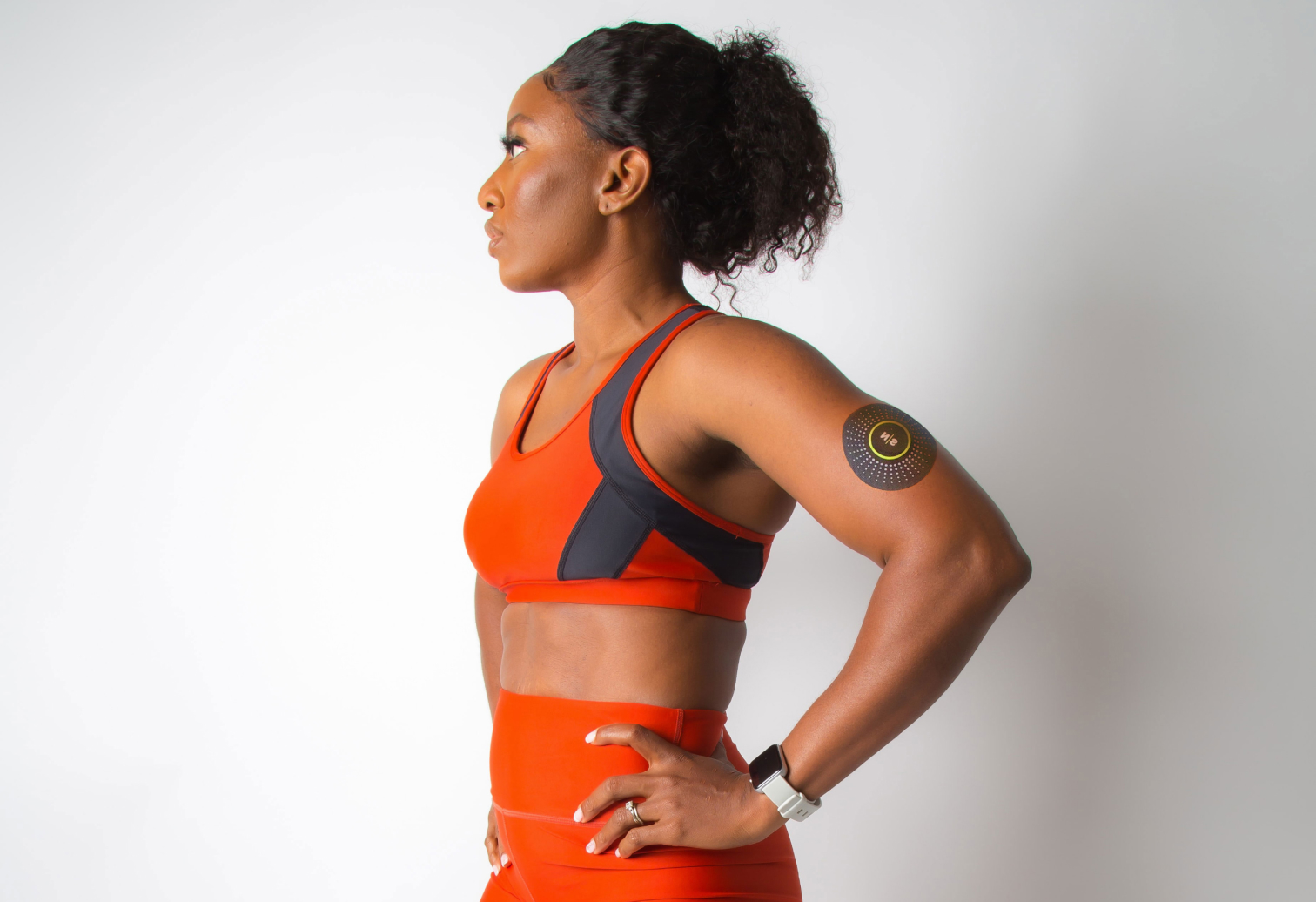
You likely know of fasting blood glucose since this is a pretty standard blood test. Blood glucose, also known as blood sugar, is a type of sugar that your body uses for various processes. When you’re active, your body uses glucose to fuel muscles.
Glucose is also an important fuel source for your heart, kidneys, nerve cells, and white blood cells. Glucose comes from carbohydrate foods such as grains, starchy foods, milk products, fruits, and sugary foods such as candies and soda. Many carbohydrate foods contain many glucose or sugar molecules linked together, which enzymes in your gut then have to unlink. Glucose is then absorbed and goes into the bloodstream.
When you eat carbohydrates throughout the day, your body uses glucose as fuel. The rest is stored as liver and muscle glycogen (glucose storage). However, if you exceed the capacity of the glycogen deposits, the glucose remains in the blood until it can be stored as fat, which leads to high blood glucose levels.
Most athletes use carbs as the primary source of energy before their training. Still, they also consume carbs after the exercise to restore glycogen deposits. Most athletes base the number of carbohydrates they consume on estimations of their energy and macronutrient needs and subjective measurements of how they feel during and after the training session. But a glucose monitoring system can help here.
So, it’s no surprise that athletes flock to tools like the continuous glucose monitor (CGM) to see how their training and food intake impact their blood glucose levels in real-time. It allows them to make better decisions regarding their carbohydrate intake around training to maximize performance without compromising their health.
What is Continuous Glucose Monitoring and Why is it Becoming Increasingly Popular with Athletes
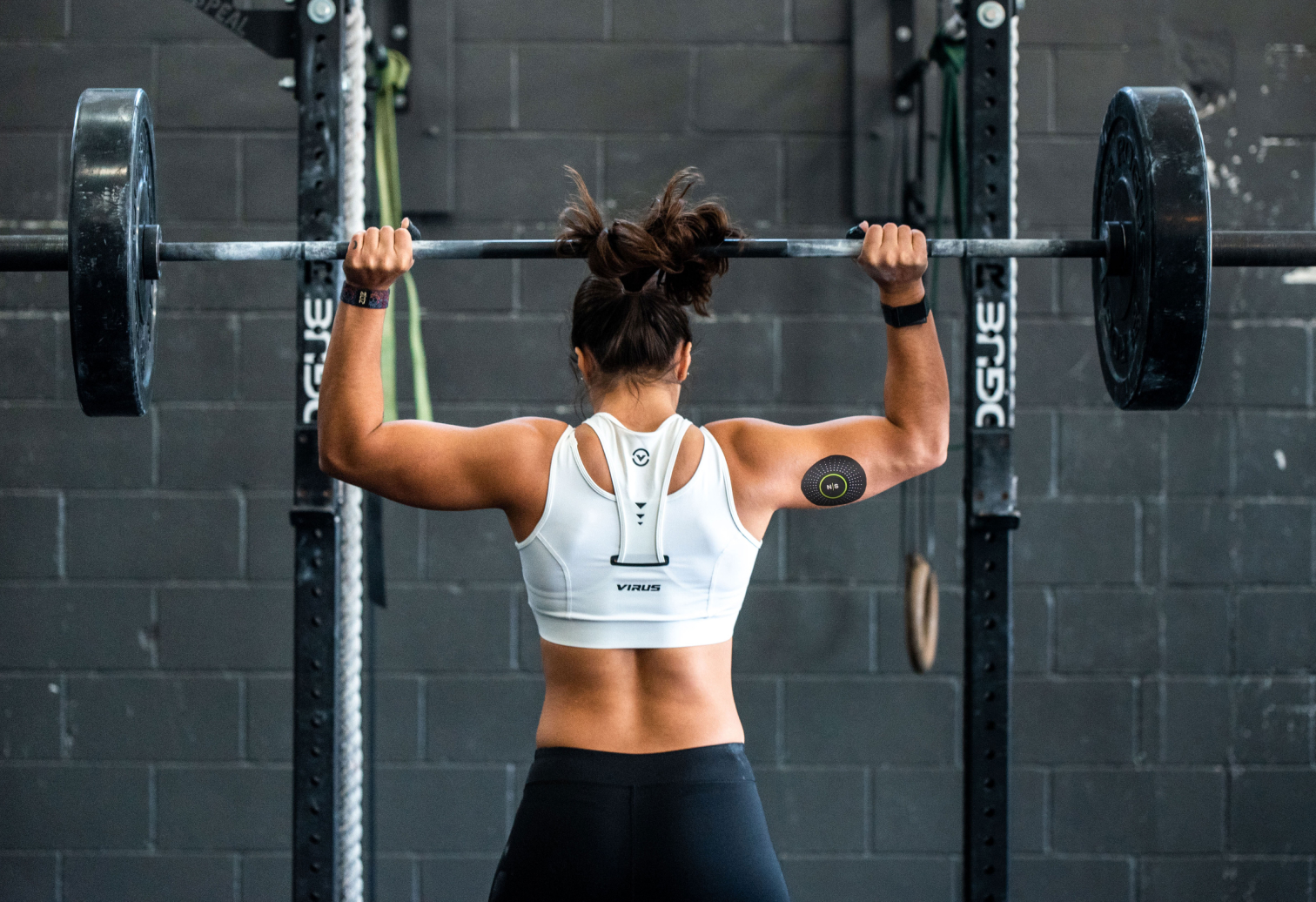
Glucose control was once something only people who already had diabetes needed to monitor. But since monitoring your glucose data and glucose trends can be an effective preventive health measure, tools to monitor and track your blood glucose are becoming increasingly popular.
One of these tools is the CGM device, traditionally used by people with diabetes to avoid health complications and monitor their glucose levels. People with diabetes cannot produce insulin (type 1 diabetes) and/or cannot use insulin properly (type-2 diabetes).
The body uses the hormone insulin to allow glucose to move into the cells. If your body cannot produce or use insulin properly, you can experience high glucose levels (hyperglycemia). So, people with diabetes can use the CGM to monitor their glucose levels and make decisions (regarding food or medication) that help minimize the risk of high blood sugar.
What exactly is a CGM device? Simply put, it’s a small device attached to the skin (usually your upper arm), with a tiny flexible sensor that goes under the skin to detect blood glucose. While sensor lifetimes differ, they typically can be used for two weeks continually and measure glucose levels every one to fifteen minutes (depending on the device).
This continuous recording provides valuable information on glucose trends and fluctuations. The app connected to the device shows blood glucose levels in real-time. The CGM device allows everyone, including athletes, to make diet and activity choices to improve glucose levels.
Constantly high blood glucose levels among those with diabetes can increase the risk of stroke, dementia, and kidney and nerve failure. However, evidence shows that elevated blood glucose even in someone without diabetes can lead to a higher risk of cancer, cardiovascular disease, inflammation, blood vessel damage, and diabetes.
Many athletes consume a higher carbohydrate diet to support their training. But for some athletes, this can lead to higher blood sugar levels. In addition, the intensity or duration of their exercise can cause glucose to rise or fall during training.
Seeing the changes in glucose can help provide valuable information about what they should be eating pre, during, and post-exercise. For some athletes who experience a release of adrenaline during training or racing, it can cause a significant increase in glucose or hyperglycemia.
Other considerations for a larger glucose spike during training could be due to the meal consumed prior to exercise or the release of glucose due to rapid glycogen breakdown during higher intensity training. It is possible that several of these factors may be involved. This may be another good reason to monitor blood glucose levels.
Endurance Athletes Benefit from Monitoring their Blood Glucose

Many endurance athletes follow a strict diet with high levels of carbohydrates that are meant to refill glycogen stores and improve energy levels and performance. In some cases, this can positively impact the athletes’ lifestyle. Unfortunately, there are cases in which the athlete can have a low tolerance for carbs, leading to significantly higher sugar levels in the blood.
High-intensity physical training can release hormones, including adrenaline (epinephrine), causing a rise in blood sugar. The effect of these hormones on increasing the release of glucose from glycogen in the liver can be even more significant if you don’t eat before training. However, if you have a history of high sugar levels, adrenaline can cause glucose levels to increase to very high levels, leading to an increased risk of cardiovascular disease. Glucose spikes above 180 can cause vascular damage so it is advised to keep glucose levels below 180 during exercise to avoid any risk. Keeping track of glucose levels improves the quality of life for an athlete. It also has a positive impact on performance and energy levels.
Endurance athletes may also be training for long periods, often hours at a time. If they do not fuel appropriately before and during training, they can risk low blood sugar. They can even experience hypoglycemia, in which their glucose levels can become too low which may lead to bonking or feeling a noticeable drop in energy levels and decrease in performance. Using the CGM, an athlete can monitor for dips in glucose or decreases in glucose during training and plan their fueling strategy accordingly.
CGMs can also help athletes with glycemic variability. Glycemic variability is a metric used to assess glucose fluctuations and, in most cases, will improve with exercise. However, if athletes are engaging in a high-intensity workout in which their glucose is going very high or long-duration low-intensity exercise in which their glucose may be going low, they may see an increase in their glycemic variability.
A greater degree of glycemic variability is associated with an increased risk of oxidative stress and endothelial dysfunction (cells that line our blood vessels).
How Glucose Monitoring to Maximizes Athletic Performance
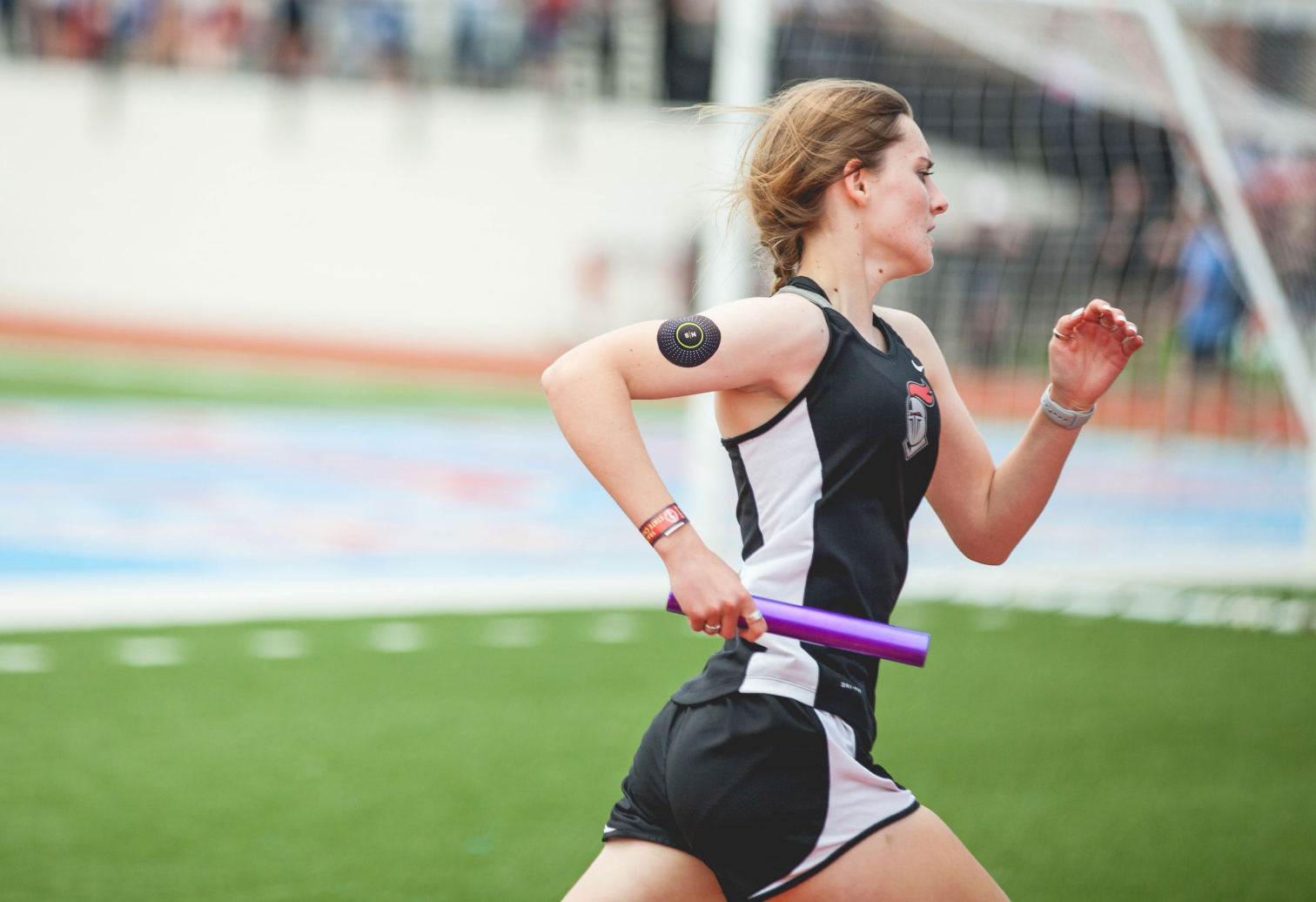
Glucose monitoring can help maximize athletic performance for various reasons. For one, it’s an easier, less invasive method than other types of glucose measurements. Before CGM technology, if an athlete wanted to measure blood glucose, they would have to use a finger-prick device (glucometer). It allows you to measure glucose at one point and involves pricking the finger and then measuring the glucose in a drop of blood.
It’s an effective tool for some purposes, but it does not allow for the continuous measurement of glucose and is not practical during training because the athlete would have to stop their activity to take the measurement. The CGM, on the other hand, allows for continuous glucose measurement, is less invasive, and allows athletes to measure glucose during training without having to stop and take measurements. So, it’s no surprise they’re increasingly popular among everyone, from amateur to professional endurance athletes.
Some CGM devices are connected to Bluetooth, allowing the data to auto-populate. Others need to be scanned for the data to populate in the app. The device itself usually holds about eight-hours worth of data. It’s why using the CGM is becoming the most popular way for athletes to keep track of their glucose levels.
In addition, there is evidence that CGM devices are accurate during intense training. Although there is limited research at this point, there is some evidence that the CGM can help increase performance and recovery.
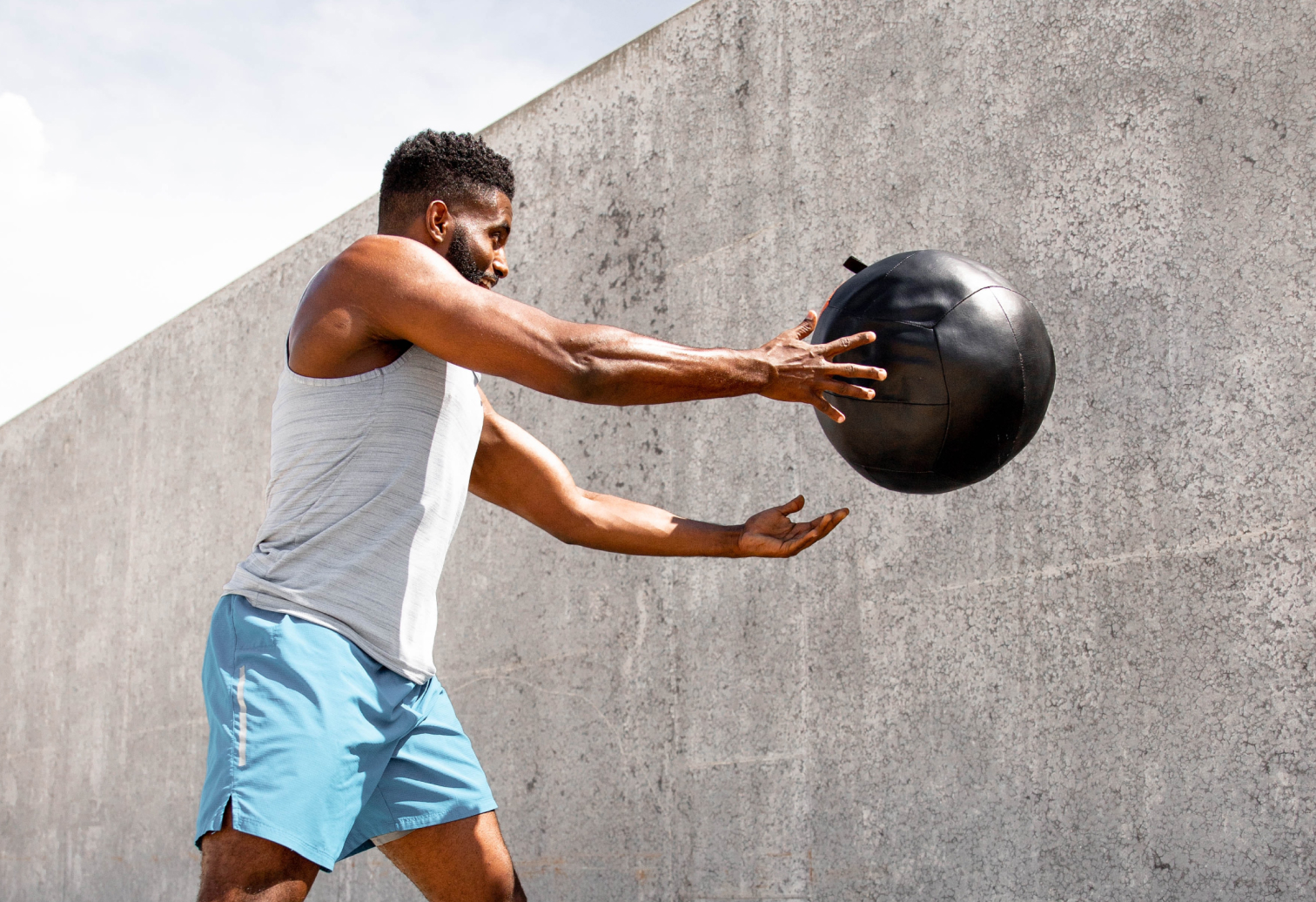
It’s important to remember that everyone is different and will respond uniquely to carbohydrates. So the CGM is a valuable tool for some athletes, but not for all. It’s not a tool that controls blood sugar; it allows the doctor, the dietitian, and the athlete to know about blood sugar concentrations, even during a workout. It enables them to make diet and training decisions to help improve their performance and minimize any health risks associated with high or low blood sugar.
With the help of a CGM device, a registered dietitian or nutritionist can plan a specific diet that meets all of an athlete’s energy needs. There are many situations in which an athlete will require the help of a licensed nutritionist, especially if it involves CGMs. So if you’re wondering how to better understand a few of the most common situations that you might meet along the CGM journey, here are a few of them explained:
Example 1 A Spike in Blood Glucose While Using a CGM
Think of an athlete who uses a CGM and notices a considerable rise in blood glucose from low-intensity activities like biking, running, swimming, or yoga. In this case, they may benefit from minimizing their carbohydrate intake before exercising.
In the case of low-intensity exercise, blood sugar levels will not typically rise. In fact, an athlete should notice the opposite in which blood sugar levels should decrease or remain steady as the body uses glucose and fat for energy.
During low-intensity or zone 2 cardio (approximately 60 percent or less of VO2 Max, or maximal oxygen consumption) an athlete will use more fat for fuel. As intensity levels rise there is a crossover in which the body starts to utilize more glucose and less fat.
This is why the athlete may notice their glucose values remain steady or decline slowly during this zone 2 training (depending on if they take in fuel during training). Large dips in glucose during low-intensity exercise and feeling of low energy or “bonking,” especially within the first 60 minutes of exercise, might be an indication the athlete is not fueling adequately or they are not efficiently burning fat and may need to improve metabolic flexibility.
The athlete can use the information they get from the CGM to make changes to their fueling strategy with the goal to prevent bonking and improve their metabolic flexibility. A slight initial rise in glucose at the start of low-intensity activity may be okay, but a significant increase in glucose may indicate the athlete is consuming too many carbohydrates before exercise.
Example 2

Higher Glucose Values During Intense Exercise
If an athlete sees a large spike during strength training or high-intensity interval training, it may indicate they’re not getting enough fuel to support the movement. So the body responds by increasing hormones that release stored energy from the liver. This athlete may benefit from having a well-balanced meal two to three hours before the exercise.
Example 3 Glucose Spikes During Longer Training
Another example is if an athlete is experiencing extreme drops in glucose during a more extended training session like running or biking. It may be a sign they are not fueling properly before and during the workout.
In this case, a typical recommendation would be having a balanced meal with carbohydrate, protein, and small amounts of fat (macro amounts will differ depending on the athlete) about two to three hours prior and more consistent fueling during the activity with a specific target for carbohydrates per hour of training.
Example 4
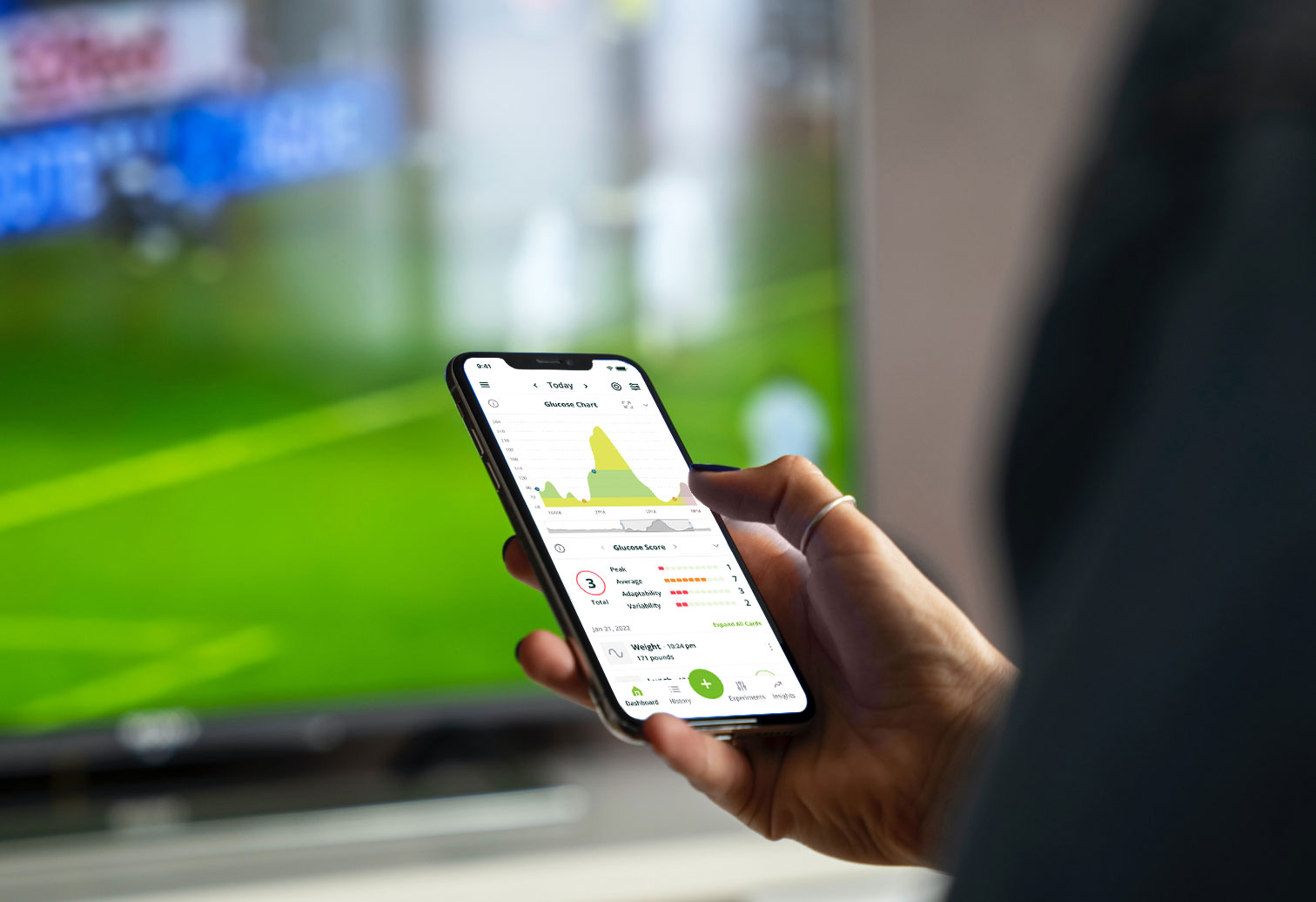
A Dehydration-Related Spike in Glucose
If an athlete sees a large spike in glucose despite fueling properly before exercising, it might be a sign of dehydration or a need for additional electrolytes. In this case, they would need to work on adequate hydration and electrolyte intake before, during, and after training.
Example 5
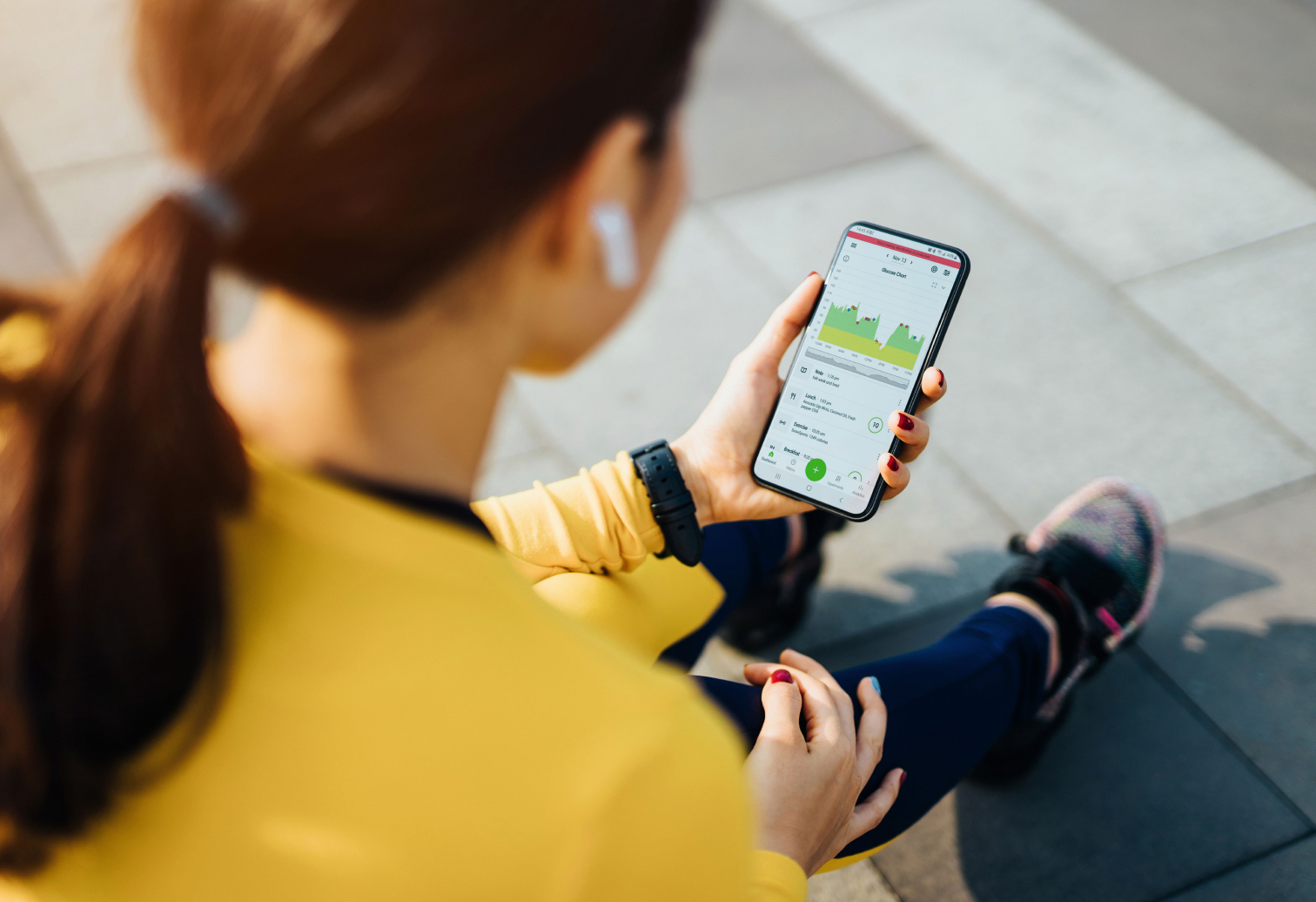
Low-Carb Dips in Glucose
If a low-carb athlete is experiencing extreme drops in glucose accompanied by low energy or poor performance, they can work on a fat adaptation and targeted carbohydrate intake plan that works within the athlete’s goals.
Example 6 Moderate-Intensity Training Dips in Blood Sugar
Sometimes, an athlete experiences drops in blood sugar levels during moderate-intensity activities such as soccer, hockey, or lacrosse, combined with low energy levels. It means that glycogen (the storage form of glucose) is becoming depleted.
Since the body has a hard time relying on fat for fuel during moderate to high-intensity training, this can negatively impact performance.
The recommendation would be to have a pre-workout meal with carbohydrates and a post-workout meal balanced with carbs and protein to restore their glycogen deposits. They may also need to consider fueling during the session (likely at the midway point or half-time break in the game).
Athletes and Sports Where Continuous Glucose Monitoring is Growing

CGM devices are most popular among athletes who struggle with high blood sugar levels, prediabetes, or even diabetes. Sports that cause the body to rely on glycogen as an energy source are the ones that often cause sugar spikes. You can find cycling, power sports, marathons, and dancing among these.
Many well-known athletes now wear CGM devices. For example, at the World Half Marathon Championships in Poland, Jake Smith wore a CGM device that registered his blood sugar fluctuations. The device showed a rapid decline in sugar levels during the training time for the race. His nutritionist advised eating more carbs during the day before the marathon to correct this. So he ate pasta, rice, chicken, vegetables, and fruits. The following day, he had two bagels with Nutella and peanut butter in the morning. He ended up being the world’s best distance runner at the marathon. By keeping track of his glucose levels with the help of a CGM device, he corrected his glucose levels and performed his very best at the race.
A Note From the Author

When I wore the CGM I was able to see how my fueling was impacting my glucose levels. For instance, I noticed that doing a fasted run did not work well for me. My glucose levels would always spike up if I ran in the morning without eating first, but if I had a healthy breakfast and hydrated well before a run my levels would not spike and look more stable during the run.
I was also able to experiment with fueling during a few of my longer runs to determine how often I needed to consume carbs in order to prevent large drops in glucose and have more sustainable energy.”
— Katie Kissane MS, RD
Reach Peak Performance With the Help of NutriSense
Each body works uniquely, transforming basic food into a fantastic energy source that helps the organs work properly. Carbs are the primary source of energy for the body. Still, without insulin, sugar can remain in your bloodstream for a long time, leading to health issues like prediabetes and even diabetes. Physical exercise can increase or decrease blood sugar levels. An athlete needs to keep track of these fluctuations to reach peak performance, and using a CGM is a great way to do this.
The programs at NutriSense can help you manage and monitor your blood glucose levels as you make the changes you need to optimize your metabolic health. The CGM technology can provide insights into your blood glucose data, personalized support from a team of registered dietitians, and strategies to help manage balanced blood glucose levels.


